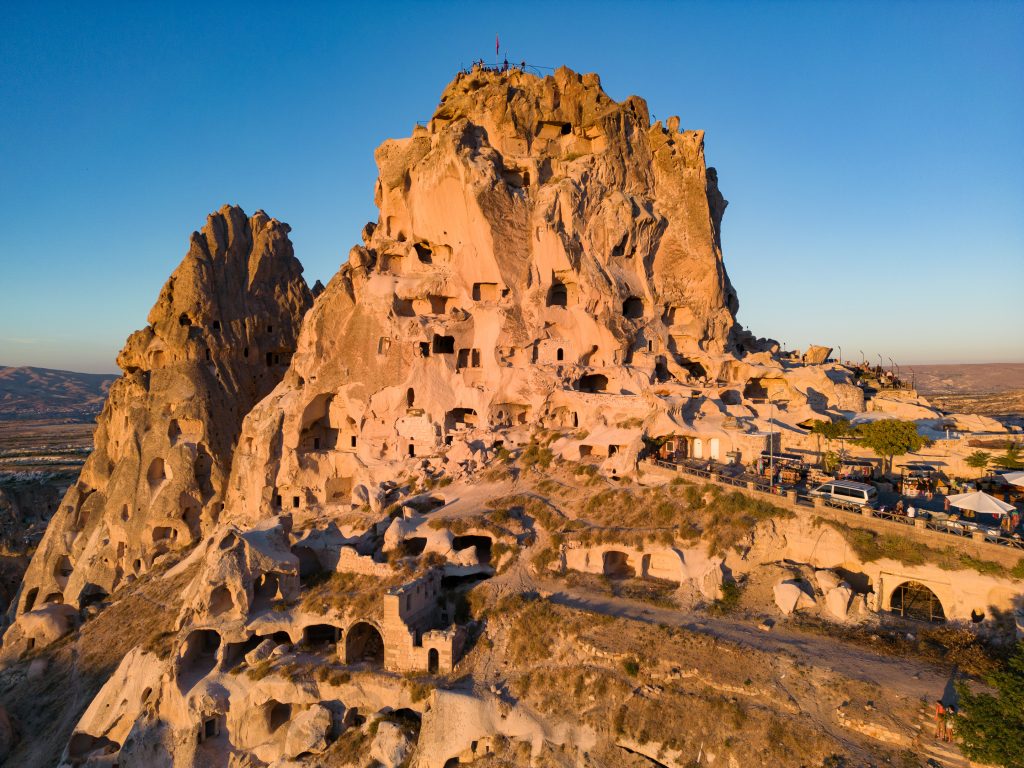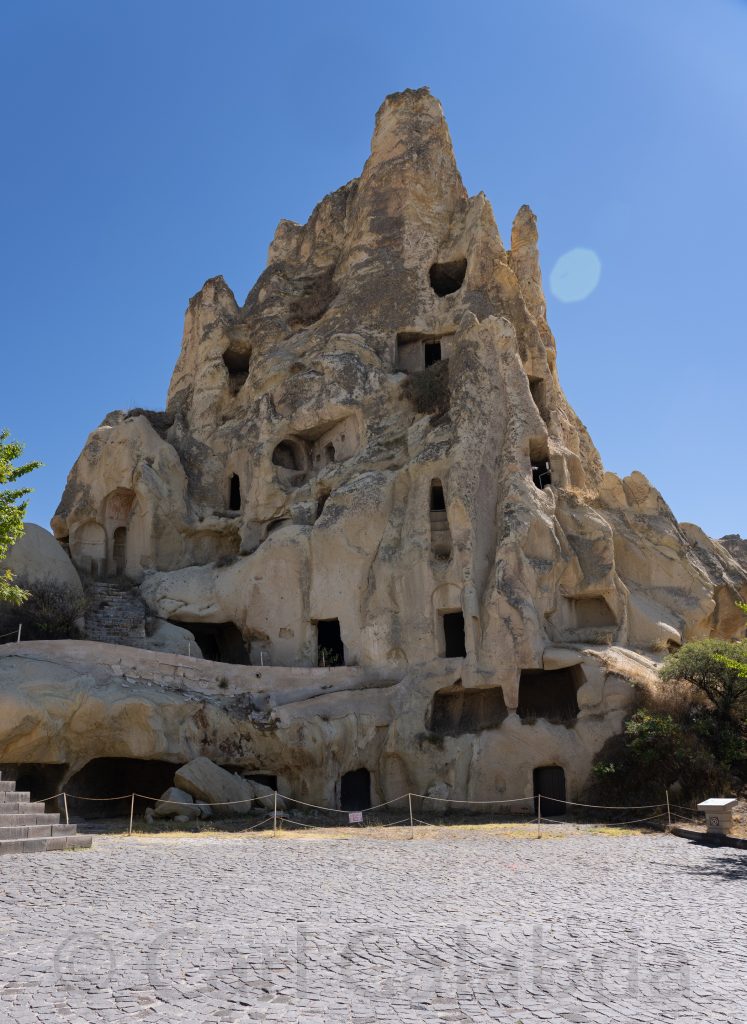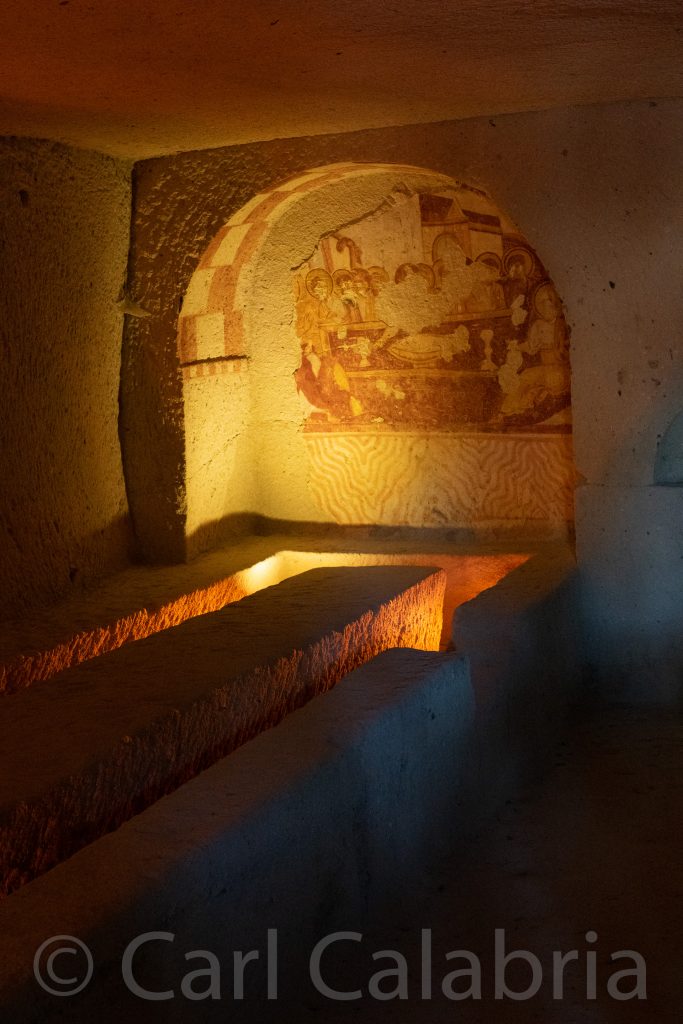
When we decided to vacation in Turkey, it immediately became apparent that we could not miss visiting the Cappadocia region which features geography and human endeavor like few other places on the planet. Pictured above is Uçhisar which means ‘Outer Citadel’ in Turkish and refers to the huge rock cone that is its central feature. Uçhisar is dominated by a 60-meter-high ‘castle’ which is crisscrossed by numerous underground passageways and rooms, which are now mostly blocked or impassable but which served as residential areas and, perhaps, cloisters in Byzantine times. It is believed that around 1,000 people once lived in the castle although it is no longer inhabited today. It was our last stop of the day and I used the drone for a nice golden light shot.
The village of Göreme, located within the Göreme National Park which was added to the UNESCO World Heritage List in 1985, will be our base of operations while in Cappadocia and is known for the countless eroded rock formations, many of which were hollowed out in the Middle Ages to create houses, churches, and underground cities. Our hotel room is located within such a man-made cave.
Our day began with a visit to the Göreme Open Air Museum. First thought to be a Byzantine monastic settlement that housed some 20 monks, then a pilgrimage site from the 17th century, this cluster of rock-cut churches, chapels, and monasteries was a wonderful introduction to the history of the region. The various churches have been given names by the locals such as the Dark Church, the Apple Church, and the Snake Church based on some of the paintings inside. We hired a nimble 85-year old guide who gave us a complete education on the significance of the site. Photography was not permitted in the churches but was allowed in the kitchens and dining rooms, an examples of the latter is shown below one of the typical carved rock formations. The center section of the u-shaped cutout is a dining table and the areas outside the u-shape are for seating. The fresco on the wall is one of the first depictions of the Last Supper and unlike Michelangelo’s version painted hundreds of years later, Jesus is seated at the head of rather than in the middle of the table.


